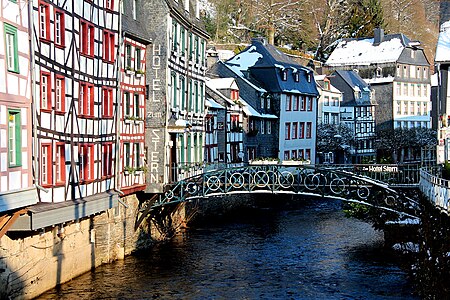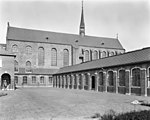Rur
International rivers of EuropePages with Dutch IPAPages with German IPAPages with Limburgish IPARivers of Belgium ... and 11 more
Rivers of GermanyRivers of Limburg (Netherlands)Rivers of Liège ProvinceRivers of North Rhine-WestphaliaRivers of the Ardennes (Belgium)Rivers of the EifelRivers of the NetherlandsRoerdalenRoermondRur basinTributaries of the Meuse

The Rur or Roer (German: Rur [ʁuːɐ̯]; Dutch and Limburgish: Roer, Dutch pronunciation: [ˈruːr], Limburgish: [ˈʀuːʀ˦]; French: Rour) is a major river that flows through portions of Belgium, Germany and the Netherlands. It is a right (eastern) tributary to the Meuse (Dutch: Maas). About 90 percent of the river's course is in Germany. It is not to be confused with the rivers Ruhr and Röhr, which are tributaries of the Rhine in North Rhine-Westphalia.
Excerpt from the Wikipedia article Rur (License: CC BY-SA 3.0, Authors, Images).Rur
Hornerweg, Roermond
Geographical coordinates (GPS) Address Nearby Places Show on map
Geographical coordinates (GPS)
| Latitude | Longitude |
|---|---|
| N 51.197777777778 ° | E 5.9811111111111 ° |
Address
Louis Raemaekersbrug
Hornerweg
6041 LE Roermond
Limburg, Netherlands
Open on Google Maps








